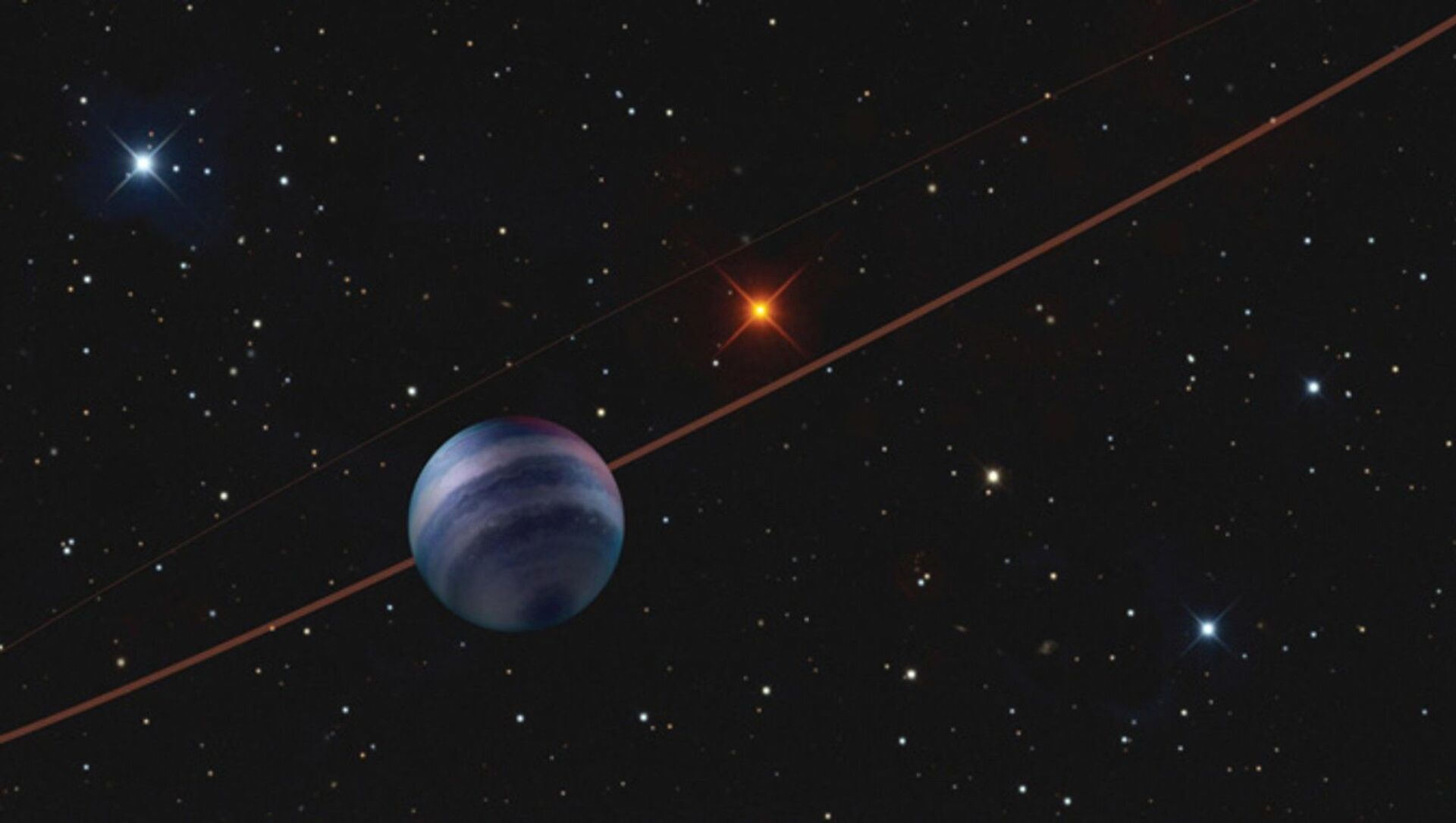https://sputnikglobe.com/20210731/astronomers-spot-close-exoplanet-that-has-surface-temperature-ready-to-bake-sweets-1083495863.html
Astronomers Spot ‘Close’ Exoplanet That Has Surface Temperature Ready to Bake Sweets
Astronomers Spot ‘Close’ Exoplanet That Has Surface Temperature Ready to Bake Sweets
Sputnik International
Officials previously uncovered the distant exoplanet in 2011 with the belief that it was simply a free-floating object, however, it was only recently... 31.07.2021, Sputnik International
2021-07-31T00:40+0000
2021-07-31T00:40+0000
2021-07-31T00:40+0000
society
newsfeed
astronomers
exoplanet
temperature
baking
https://cdn1.img.sputnikglobe.com/img/07e5/07/1f/1083495834_0:0:1768:1000_1920x0_80_0_0_4c779716eea4aaeff4fbc264ac5ae80e.jpg
A group of astronomers have spotted one of the closest exoplanets to the solar system to date, one that also happens to have the perfect surface temperature to meet a baker's needs, it was recently revealed.Sitting just 35 light-years away, the newly-named COCONUTS-2b exoplanet was pinpointed by a team of astronomers who tapped the use of the COol Companions ON Ultrawide orbiTS (COCONUTS) survey.“Directly detecting and studying the light from gas-giant planets around other stars is ordinarily very difficult, since the planets we find usually have small-separation orbits and thus are buried in the glare of their host star’s light,” Michael Liu, one of several participants on the study, said in a statement.“With its huge orbital separation, COCONUTS-2b will be a great laboratory for studying the atmosphere and composition of a young gas-giant planet.”Offering an idea of what the sky could look like on the exoplanet, the team of researchers indicated that, for starters, it would be completely different from the views provided on Earth - think apocalyptic. “Nighttime and daytime would look basically the same, with the host star appearing as a bright red star in the dark sky,” reads the group’s release regarding their findings.The team’s findings were published in the July edition of the Astrophysical Journal Letters.
Sputnik International
feedback@sputniknews.com
+74956456601
MIA „Rossiya Segodnya“
2021
News
en_EN
Sputnik International
feedback@sputniknews.com
+74956456601
MIA „Rossiya Segodnya“
Sputnik International
feedback@sputniknews.com
+74956456601
MIA „Rossiya Segodnya“
society, newsfeed, astronomers, exoplanet, temperature, baking
society, newsfeed, astronomers, exoplanet, temperature, baking
Astronomers Spot ‘Close’ Exoplanet That Has Surface Temperature Ready to Bake Sweets
Officials previously uncovered the distant exoplanet in 2011 with the belief that it was simply a free-floating object, however, it was only recently discovered that the gas giant actually orbits another, much larger star.
A group of astronomers have spotted one of the closest exoplanets to the solar system to date, one that also happens to have the perfect surface temperature to meet a baker's needs, it was recently revealed.
Sitting just 35 light-years away, the newly-named COCONUTS-2b exoplanet was pinpointed by a team of astronomers who tapped the use of the COol Companions ON Ultrawide orbiTS (COCONUTS) survey.
Although the surface temperature on COCONUTS-2b ranges at about 320 degrees Fahrenheit, officials were able to zero in on the chilled celestial body because of the light emitted from the exoplanet’s residual heat, which came about from the planet’s formation. Officials noted that low-energy infrared light was critical to spotting the exoplanet.
“Directly detecting and studying the light from gas-giant planets around other stars is ordinarily very difficult, since the planets we find usually have small-separation orbits and thus are buried in the glare of their host star’s light,” Michael Liu, one of several participants on the study, said in a
statement.
“With its huge orbital separation, COCONUTS-2b will be a great laboratory for studying the atmosphere and composition of a young gas-giant planet.”
Offering an idea of what the sky could look like on the exoplanet, the team of researchers indicated that, for starters, it would be completely different from the views provided on Earth - think apocalyptic. “Nighttime and daytime would look basically the same, with the host star appearing as a bright red star in the dark sky,” reads the group’s release regarding their findings.
Researchers using NASA’s Wide-field Infrared Survey Explorer satellite had previously come across the curious exoplanet in 2011, when they concluded the body was simply a free-floating object. However, that wasn’t the case. As it turns out, lead researcher Zhoujian Zhang and his team of astronomers soon uncovered that COCONUTS-2b was part of the COCONUTS-2 planetary system, and was orbiting a central star roughly one-third the mass of the Sun and 10 times younger.
The team’s findings were published in the
July edition of the Astrophysical Journal Letters.

